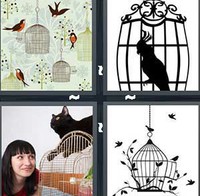


Often have metallic spots on wings often conspicuously coloured with black, orange and blue Mostly white, yellow or orange some serious pests of Brassica pupa supported by silk girdle Often have 'tails' on wings caterpillar generates foul taste with osmeterium organ pupa supported by silk girdle Usually have reduced forelegs, so appear four-legged often brightly coloured Small, brightly coloured often have false heads with eyespots and small tails resembling antennae Small, darting flight clubs on antennae hooked backwards Small, brown, like geometrid moths antennae not clubbed long slim abdomen Phylogenetic analysis suggests that the traditional Papilionoidea is paraphyletic with respect to the other two groups, so they should both be included within Papilionoidea, to form a single butterfly group, thereby synonymous with the clade Rhopalocera. Traditionally, butterflies have been divided into the superfamily Papilionoidea excluding the smaller groups of the Hesperiidae (skippers) and the more moth-like Hedylidae of America. Their scientific classification is in the macrolepidopteran suborder clade Rhopalocera from the order Lepidoptera, which also includes moths. Etymologyįurther information: Taxonomy of the Lepidoptera The Smithsonian Institution says "butterflies are certainly one of the most appealing creatures in nature". Culturally, butterflies are a popular motif in the visual and literary arts. Larvae of a few butterflies (e.g., harvesters) eat harmful insects, and a few are predators of ants, while others live as mutualists in association with ants. Some species are pests because in their larval stages they can damage domestic crops or trees other species are agents of pollination of some plants. Many butterflies are attacked by parasites or parasitoids, including wasps, protozoans, flies, and other invertebrates, or are preyed upon by other organisms. Some, like the monarch and the painted lady, migrate over long distances. Some butterflies, especially in the tropics, have several generations in a year, while others have a single generation, and a few in cold locations may take several years to pass through their entire life cycle.īutterflies are often polymorphic, and many species make use of camouflage, mimicry, and aposematism to evade their predators.

#4 PICS 1 WORD 5 LETTERS BUTTERFLY SKIN#
When metamorphosis is complete, the pupal skin splits, the adult insect climbs out, and after its wings have expanded and dried, it flies off. The caterpillars grow, sometimes very rapidly, and when fully developed, pupate in a chrysalis. Winged adults lay eggs on the food plant on which their larvae, known as caterpillars, will feed. Butterfly fossils date to the Paleocene, about 56 million years ago.īutterflies have a four-stage life cycle, as like most insects they undergo complete metamorphosis. The group comprises the superfamilies Hedyloidea (moth-butterflies in the Americas) and Papilionoidea. Butterflies ( Rhopalocera) are insects that have large, often brightly coloured wings, and a conspicuous, fluttering flight.


 0 kommentar(er)
0 kommentar(er)
